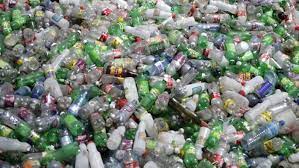Low-density polyethylene, or LDPE, is a widely used plastic known for its flexibility, lightweight nature, and resistance to moisture. It is commonly found in plastic bags, shrink wraps, food packaging, and protective films. While LDPE is highly versatile and valuable in daily life, its widespread use has contributed significantly to plastic pollution, particularly in communities where proper waste management is lacking. recycle LDPE programs have emerged as an effective solution, helping communities reduce plastic waste, protect the environment, and promote sustainable practices.
Understanding LDPE and Its Environmental Impact
LDPE’s unique properties make it suitable for packaging and protective applications, but these same qualities contribute to its persistence in the environment. Being lightweight and flexible, LDPE often escapes traditional waste collection systems, ending up in waterways, parks, and landfills. Unlike biodegradable materials, LDPE takes hundreds of years to break down, posing risks to wildlife, ecosystems, and human health.
Implementing recycling programs for LDPE is therefore essential. These programs not only reduce the environmental burden of plastic waste but also conserve resources by turning used LDPE into valuable raw materials for new products.
Collection and Participation in LDPE Recycling
The success of LDPE recycling programs depends on active community participation and efficient collection systems. Communities are encouraged to collect LDPE materials separately from other recyclables to minimize contamination. This can include plastic shopping bags, packaging films, bubble wraps, and agricultural plastics. Many programs provide dedicated drop-off points in local stores, schools, and community centers, making it easier for residents to participate.
Education and awareness are key components of these programs. By informing communities about what LDPE is and how to prepare it for recycling, programs can increase participation rates. For instance, rinsing food packaging and removing labels or adhesives improves the quality of the recycled material, allowing it to be effectively reprocessed into new products.
Processing and Repurposing LDPE
Once collected, LDPE is sorted and cleaned to remove dirt, debris, and non-recyclable contaminants. The clean plastic is then shredded into small pieces or pellets, which serve as raw material for manufacturing new products. Recycled LDPE can be transformed into a wide range of items, including garbage bags, compost bins, piping, floor tiles, and construction materials. This process creates a circular economy for LDPE, where waste is continuously repurposed instead of being discarded.
Advanced technologies have improved LDPE recycling efficiency. Some programs now use chemical recycling methods, breaking LDPE down to its basic components to create new plastic with properties similar to virgin material. This allows for more types of LDPE waste to be recycled, reducing landfill use and expanding the potential applications for recycled products.
Community and Environmental Benefits
LDPE recycling programs provide multiple benefits for communities. Environmentally, they reduce plastic pollution, decrease landfill usage, and lower greenhouse gas emissions associated with producing virgin plastic. By keeping plastic out of rivers, oceans, and streets, these programs help protect wildlife and promote cleaner, healthier communities.
Economically, recycled LDPE can provide materials for local manufacturers, creating jobs and supporting small businesses. Programs may also encourage partnerships with retailers and waste management companies, fostering a collaborative approach to sustainability.
In addition to tangible benefits, recycling initiatives cultivate a culture of environmental responsibility. Residents, especially younger generations, become more conscious of waste management practices, sustainability, and the impact of their consumption habits.
Conclusion
Recycle LDPE programs are vital tools in the fight against plastic pollution. By collecting, processing, and repurposing LDPE materials, communities can reduce their environmental footprint while promoting sustainable practices and economic opportunities. These programs demonstrate that even widely used plastics like LDPE can be managed responsibly when communities, businesses, and local authorities work together. Through ongoing participation, education, and innovation, LDPE recycling can continue to provide lasting benefits for the environment and society.







